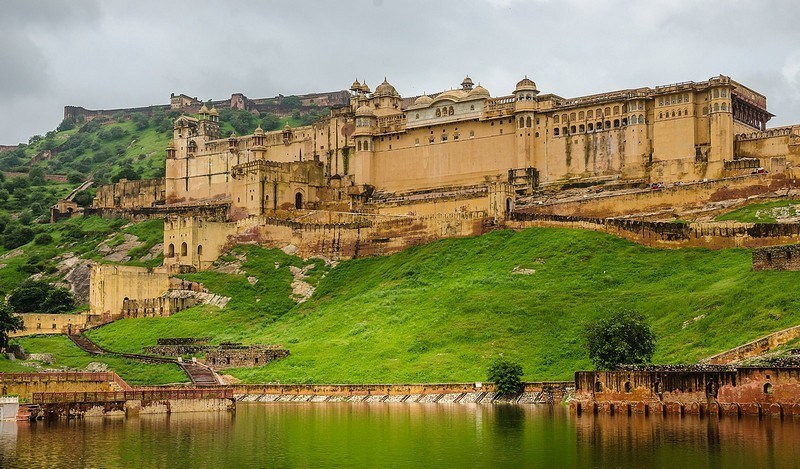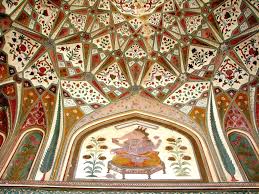Amer Fort is a fort located in Amer, Rajasthan, India. Amer is a town with an area of 4 square kilometres located 11 kilometres from Jaipur, the capital of Rajasthan. Located high on a hill, it is the principal tourist attraction in Jaipur.[2][3] The town of Amer was originally built by Meenas,[4] and later it was ruled by Raja Man Singh. Amer Fort is known for its artistic Hindu style elements. With its large ramparts and series of gates and cobbled paths, the fort overlooks Maota Lake which is the main source of water for the Amer Palace.

It consists of the Diwan-i-Aam, or “Hall of Public Audience”, the Diwan-i-Khas, or “Hall of Private Audience”, the Sheesh Mahal (mirror palace), or Jai Mandir, and the Sukh Niwas where a cool climate is artificially created by winds that blow over a water cascade within the palace. Hence, the Amer Fort is also popularly known as the Amer Palace The palace was the residence of the Rajput Maharajas and their families. At the entrance to the palace near the fort’s Ganesh Gate, there is a temple dedicated to Shila Devi, a goddess of the Chaitanya cult, which was given to Raja Man Singh when he defeated the Raja of Jessore, Bengal in 1604.

Architectural Beauty of the Amber fort
Amer fort was built with red sandstone and white sandstone. The fort still stands as a grand example of ancient Indian architecture. It is known for its blend of Rajput and Hindu style of architecture and mixture of Hindu and Muslim style of ornamentation. The carvings on the ceiling and the walls are extraordinary features of this fort.

There are many paintings of ancient hunting styles, portrait of important Rajput rulers and others. There are a series of gates in the fort and each one has a unique structure and architectural element to enjoy.You can find many buildings inside the fort including Diwan-e-Aam, SukhMandir, Sheesh Mahal and others. We will see about each in detail.
Best Time To Visit :-
Rajasthan being a desert is warm throughout the year at least during the day. Sometimes the sun can be unbearable. That is why, it is best to visit Jaipur during winter, from September to March.
